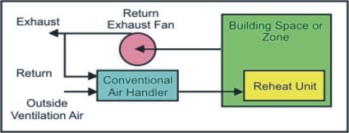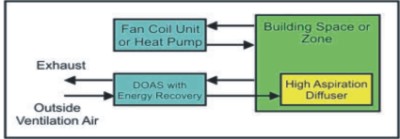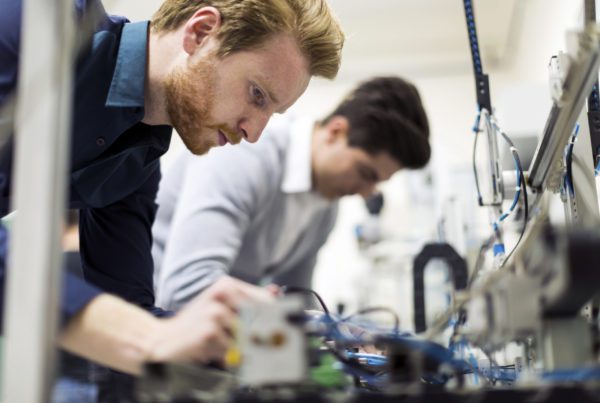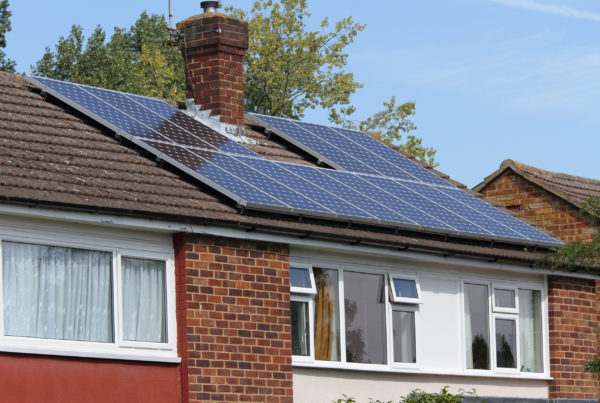
Where’s the Savings?
Do you allow your furnace to run in your house while you have windows open in areas where it’s too hot? – didn’t think so. Operation akin to this (simultaneous heating and cooling) is often necessary with conventional air handling systems in commercial buildings.
Conventional all-air systems are designed to serve the required ventilation loads while meeting the space heating and cooling loads. A dedicated outdoor air system (DOAS), as the name implies, is dedicated to handle the ventilation load while space loads are handled by a different system.
Air Conditioning Savings
Air conditioning loads consist of sensible loads that change space temperature, and latent loads that change space relative humidity. In most commercial buildings, the ventilation, or outdoor air, requirement is by far the greatest latent load – source of humid air in the summer and dry air in the winter. By separating the latent (humidity) load from the sensible (temperature) load, we can often times avoid simultaneous heating and cooling, the scenario akin to running the furnace with the windows open.
A conventional VAV system will condition the air to 55 F typically, to decrease relative humidity to desired levels and/or provide sufficient cooling in the “warmest” zones. In a building where there is a lot of diversity between zones or spaces, this could mean that a zone which is calling for heating, a perimeter space for example, may have to reheat the air serving the space to meet space temperature. This reheating wastes energy, which can be avoided using a DOAS design.


Fan Savings
DOAS units save fan energy because they typically move only the air to provide ventilation, which is only 10-30% of the volumetric flow of a conventional system. Conventional all-air systems often consume more fan energy because all cooling is provided by the central air handler, and therefore the volume of air moved is three to ten times that of a DOAS design. (See Figure 1). For the DOAS option, terminal equipment serving the space handles the rest (see Figure 2), which can be accomplished with no required forced air movement.
The DOAS handles the conditioning of ventilation air, including dehumidification in the summer, while the terminal equipment in each zone takes care of the temperature requirements. Because the treated ventilation air is dry enough to offset latent loads in a space, radiant cooling panels or chilled beams can be considered in the occupied spaces, with no required fan energy for space temperature control.
Chiller Efficiency
Radiant cooling can be done at a higher chilled water temperature and therefore the chillers may operate more efficiently. Also radiant cooling panels may provide equivalent comfort at higher space temperatures.
First Cost
Not only can energy savings be realized with a DOAS but a reduction in first costs can also be achieved. Costs for ductwork and fan motors can be reduced because you’re not moving as much air and ducts and fan motors can be smaller in size.



